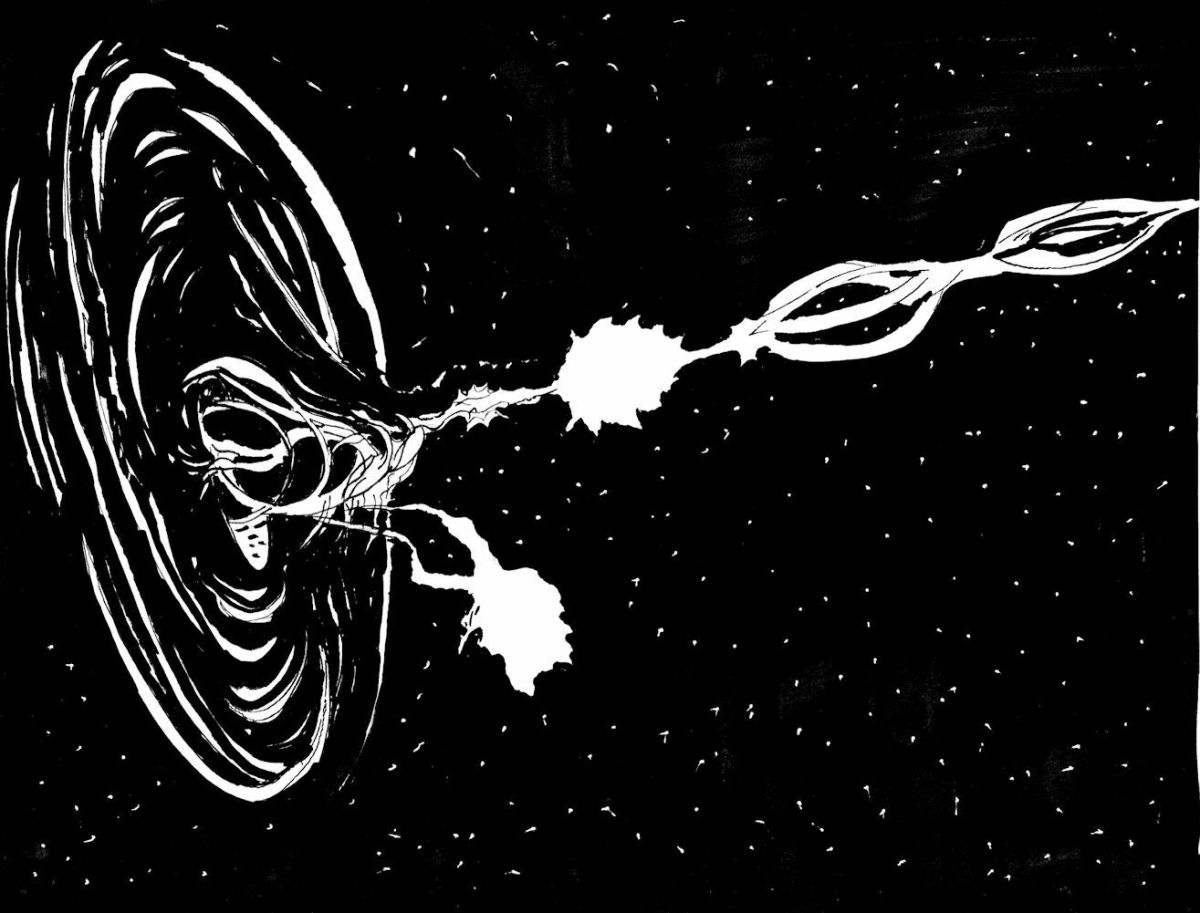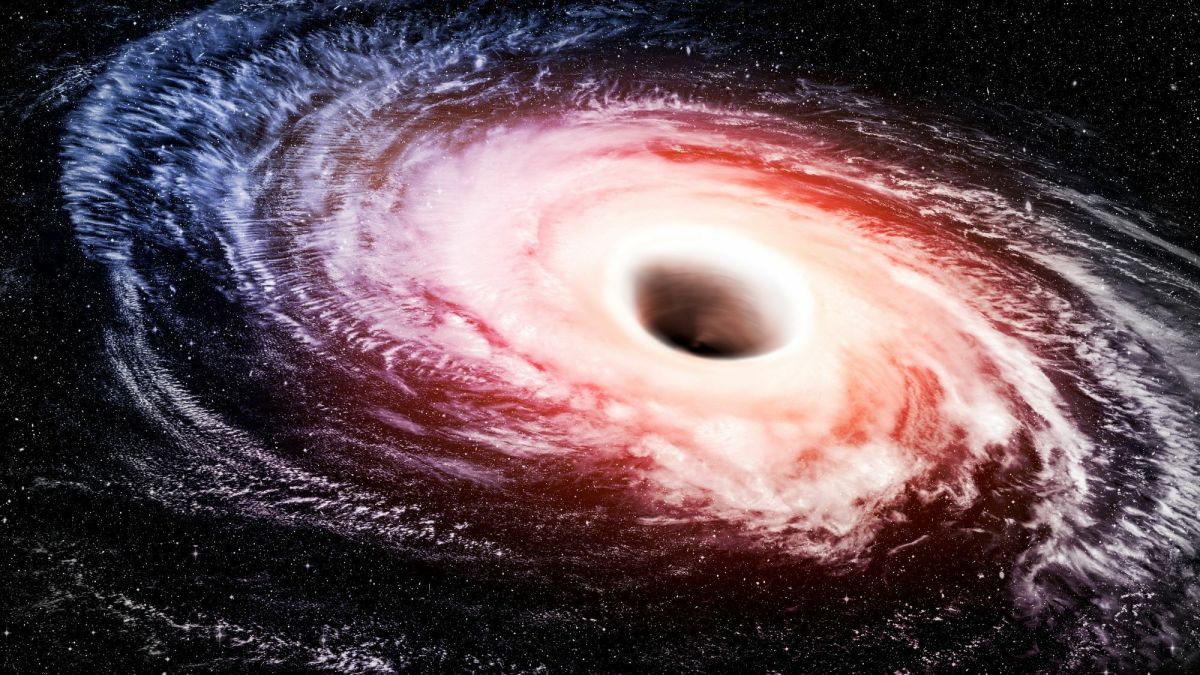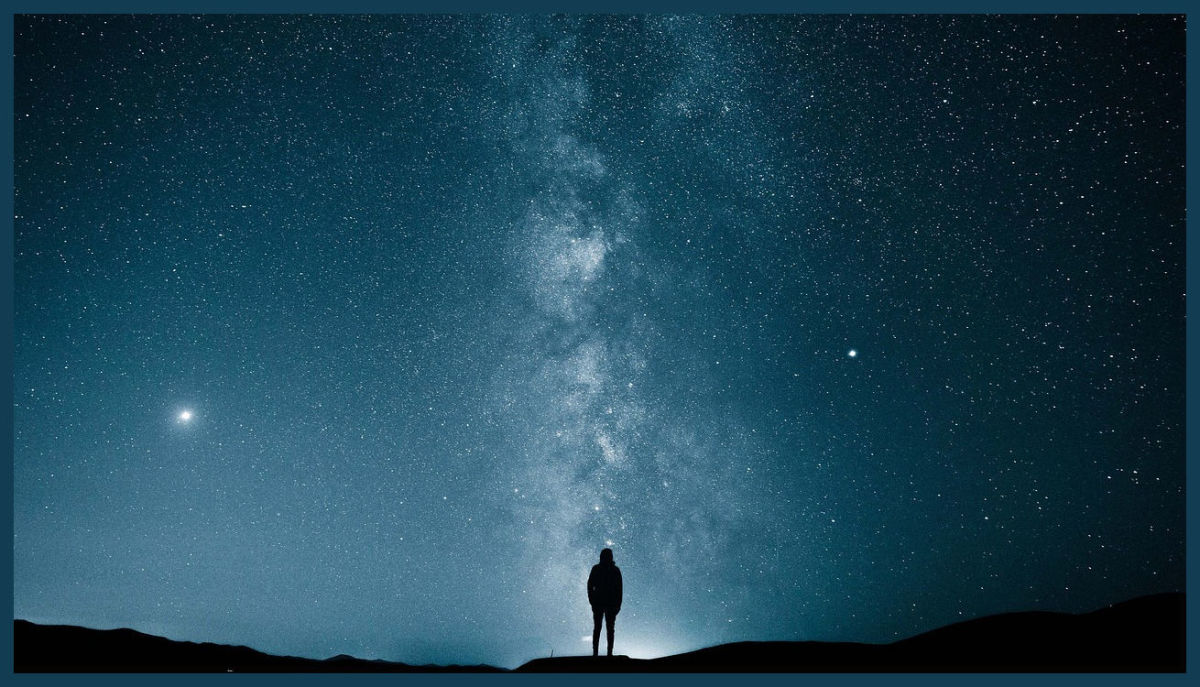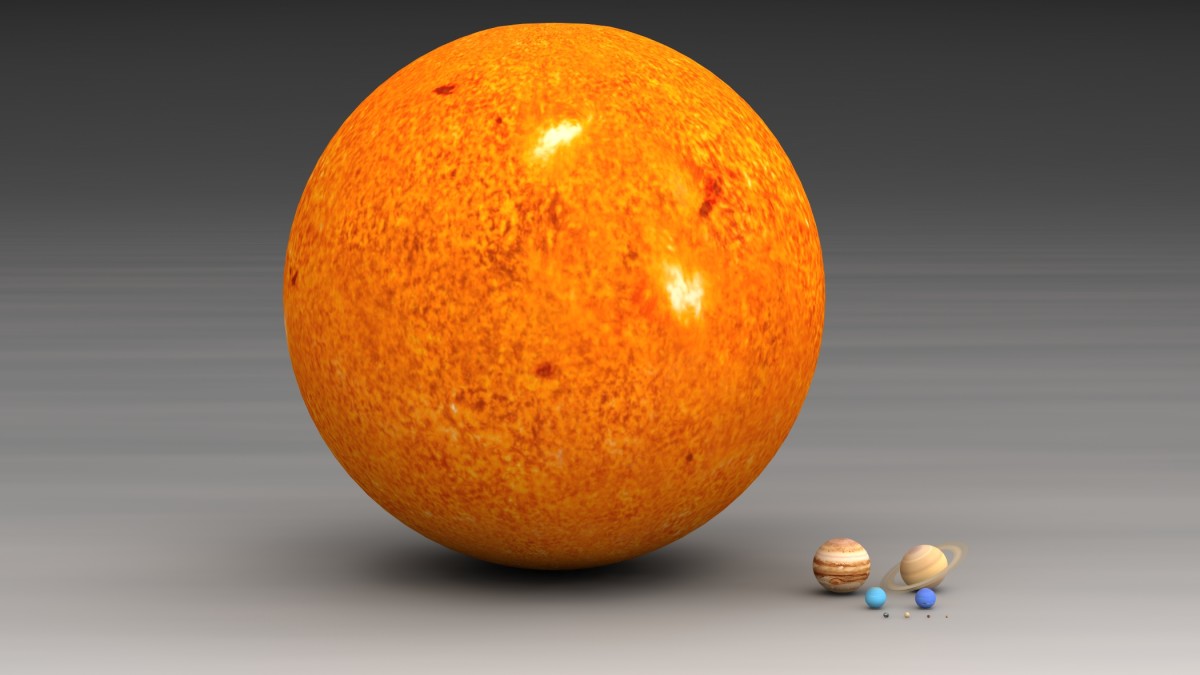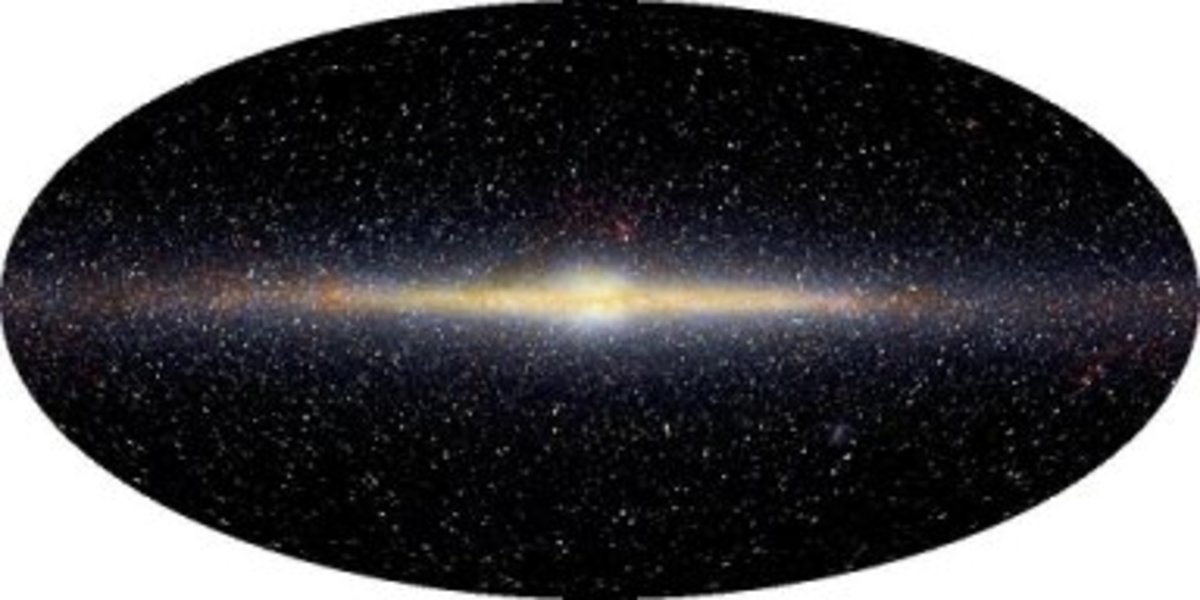The Gravitational Waves ….now for ears from the Outer Space
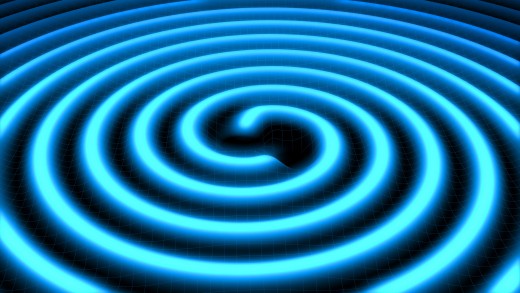
Though every moment of our lives constitute to human history but every day doesn’t become a historical one. That dawn is a different one that makes a day historic and memorable one. The twelfth day of Feb witnessed a momentous day when the collision and merger of two black holes, an enormously powerful event, resulted in ripples in the curvature of the spacetime and got detected as Gravitational Waves for the first time ever. To understand this exceptional discovery, let us understand the black holes.
The Black Holes
A black hole is one of the mysterious objects in the space. Till the detection of gravitational waves; the astronomers were keeping their fingers crossed as to what exactly it is? In simple words, a black hole is a dead star. When a star ends its life cycle it dies and collapses onto itself giving rise to a spot in the space-time which is referred to as black hole in which the matter squeezed to a tiny spot resulting in a strongest gravity pull. It is so strong even light cannot get out. Since without the light emission the object is invisible, hence it is a black hole. Due to its extreme invisibility, space telescopes can help find black holes. With the help of special tools scientists can see how the strong gravity affects the stars and gas around it. When a black hole and a star are close together, high-energy light get emitted. This kind of light cannot be seen with naked eyes, satellites and telescopes in space used to see the high-energy light. The observation confirms the presence of a black hole.
In the expanse of the universe black holes are found to be of different sizes. They are tiny like an atom, but due to the squeezed matter or stuff their mass is larger than mountain. Another type of black hole is called stellar whose mass can be up to twenty times more than the mass of the sun. Even bigger than stellar are called supermassive. These black holes have masses that amount to more than the masses of one million suns together.
The Gravitational waves
The Gravitational waves are ripples in the curvature of space time which travel as waves moving away from the source. The gravitational waves emit energy as gravitational radiation. It was predicted by Albert Einstein in 1916 on the basis of his theory of general relativity, which reveals, the pair of black holes orbiting around each other lost energy due to emission of gravitational waves. As the holes lost energy, they were gravitationally drawn closer to each other by virtue of which the spinning became faster and they emit even more gravitational waves and lost even more energy.
Detection of the Gravitational Waves
The event we are talking about that lead to the detection of gravitational wave is the collision and merger of stellar black holes. The scientists listened for 20 thousandths of a second as the two massive black holes collided and merged. The two black holes were 36 times and 29 times the mass of the Sun. The fused black hole weighed only 62 solar masses, not 65 solar masses. The three solar masses that went missing were what created the gravitational waves. This cosmic event was so huge that the total power output of gravitational waves during the brief collision was 50 times greater than the power of all the stars in the universe. This huge blast of gravitational wave energy was recorded as a high-frequency and articulated into a “chirp” like sound by a huge instrument comprised a pair of L-shaped antennas located around 4000 kms apart in Washington State and Louisiana known as LIGO (Laser Interferometer Gravitational-Wave Observatory).
The collision and merger of the two giant black holes took place deep inside the space, at a very far and unimaginable distance of about 1.3 billion light years (one light year is the distance travelled by light for a year which equals to 1,86,000 miles). The gravitational waves were on their way to earth for 1.3 billion years discovered in September 2015 and announced in Feb 2016 after checking and rechecking the collected data.
The World's Reaction
The collision at a far off place knocked at the human ear as a chirping sound that lasted for just a very little fraction of a second. The event is so fascinating and exceptional one that the space lovers and others around the globe appreciate it in their own way. Look, the views say it all:
- “This is transformational,” said Prof Alberto Vecchio, of the University of Birmingham, and one of the researchers at the Laser Interferometer Gravitational-Wave Observatory (LIGO). “We have observed the universe through light so far. But we can only see part of what happens in the universe. Gravitational waves carry completely different information about phenomena in the universe. So we have opened a new way of listening to a broadcasting channel which will allow us to discover phenomena we have never seen before,” he said.
- Professor Kip Thorne, of the California Institute of Technology, and one of the founding fathers of LIGO, said that “until now, astronomers had looked at the universe as if on a calm sea. All of that had changed. “The colliding black holes that produced these gravitational waves created a violent storm in the fabric of space and time, a storm in which time speeded up and slowed down, and speeded up again, a storm in which the shape of space was bent in this way and that way,” he said.
- Prof Neil Turok, director the Perimeter Institute for Theoretical Physics at Waterloo in Canada, and a former research colleague of Prof Stephen Hawking, called the discovery “the real deal, one of those breakthrough moments in science”. The LIGO discovery signals a new era in astronomy, he said “for me the most exciting thing is we will literally be able to see the big bang. Using electromagnetic waves we cannot see further back than 400,000 years after the big bang. The early universe was opaque to light. It is not opaque to gravitational waves. It is completely transparent.
- Physicist Paul Steinhardt echoed the sentiment: “I’m very excited about this. It’s the opening of a new era in astronomy in which we’re now going to begin to view the universe with a new set of waves—not light waves, but gravitational waves.”
- “We can now hear the universe,” said LIGO physicist and spokesperson Gabriela Gonzalez during Thursday’s triumphant meeting. “The detection is the beginning of a new era: The field of gravitational astronomy is now a reality”
- Columbia University Professor Szabolcs Marka told The New York Times,
“I think this will be one of the major breakthroughs in physics for a long time. Everything else in astronomy is like the eye. Finally, astronomy grew ears. We never had ears before”.
Contributors
LIGO spokesperson Gabriela González said. “There have been hundreds of people developing the technology, doing the analysis. We are very proud of this work taking a village, a worldwide village,” González added, referring to the more than 1,000 researchers who work on the project. These researchers were from 133 scientific institutions from Germany, Australia, and Japan apart from USA. Sixty Indian scientists from across nine Indian institutes were involved in the experiment that led to the discovery of the century.
The Applications
The discovery of gravitational waves has signaled a new era and opened a new chapter of Gravitational Astronomy. Right now, we can only see celestial objects that emit electromagnetic radiation, visible light, x-rays, gamma rays etc. But not invisible objects like colliding black holes as they don't emit any electromagnetic radiation; rather emit gravity. With this discovery, invisible objects in the universe may soon be visible.
Prof Neil Turok, director the Perimeter Institute for Theoretical Physics, Waterloo, Canada, called the discovery “the real deal, one of those breakthrough moments in science”. He said “just think of radio waves, when radio waves were discovered we learned to communicate with them. Mobile communication is entirely reliant on radio waves. For astronomy, radio observations have probably told us more than anything else about the structure of the universe. Now we have gravitational waves we are going to have a whole new picture of the universe, of the stuff that doesn’t emit light — dark matter, black holes,” he said.
“So literally, by gathering gravitational waves we will be able to see exactly what happened at the initial singularity. The most weird and wonderful prediction of Einstein’s theory was that everything came out of a single event: the big bang singularity. And we will be able to see what happened.” he further added.
The discovery is profound in 3 ways, he argues. First, we now know that gravitational waves exist and we know how to detect them. Second, the signal detected by the LIGO stations on Sept. 14, 2015, is the strongest evidence of the existence of a binary black hole system — each black hole “weighing in” at a few tens of solar masses. The signal is exactly what we’d expect to see during the violent merger of two black holes. Thirdly, and possibly even more important, “short of sending someone to a black hole,” this is the strongest direct evidence of the existence of black holes.
Obviously, when colossal announcements are made of exceptional scientific discoveries, generally many people ask how it affects them in particular those who are outside the scientific community. The understanding of such a complex scientific phenomenon is not that easy and this is definitely going to be the case of gravitational waves. To know its beneficial aspect you need to understand that every discovery and invention at its preliminary stage have caused people to raise their eyebrows considering it as complex and superficial one, but later realized the actuality, just go through these instances:
- When X-rays were discovered by Wilhelm Roentgen in 1895 during his experiments on cathode ray tubes, few would have known that in only a few years these high-energy electromagnetic waves would become a key component in everyday medicine from diagnosis to treatment.
- The first experimental production of radio waves in 1887 by Heinrich Hertz confirmed predictions of famous electromagnetic equations. Only years later, in the 1890′s, a series of demonstrations by Guglielmo Marconi, who set up radio transmitters and receivers, proved they had a practical use.
- Schrodinger’s equations describing the profound world of quantum dynamics are finding an application right now in the development of super-fast quantum computing.
In the days to come, gravitational waves would be of beneficial use.
The Future of Gravitational Waves
Astronomers have already utilized visible light, the infrared and ultraviolet, radio waves, x-rays and even gamma-rays in order to understand the mechanics of stars, evolution of the galaxies and expansion of the universe, starting from big bang some 13.8 billion years ago. And now that gravitational waves can be observed, scientists can theoretically use them to search for other objects that don’t emit light. According to Business Insider, LIGO’s sensitivity will increase by 1,000 times over the next four years, considerably increasing the chances of observing more gravitational waves. These recordings could contain crucial information about the origins of the universe.
Congratulations!
LIGO deserves tons of accolades for its exceptional service in detecting the gravitational waves from distant astrophysical sources. Congratulations to LIGO team, its collaborator Virgo and all the researchers involved. Till now everything else of astronomy was for eyes, now it grew ears. We hope a new relation with the universe with eyes and ears will mark a new era of space explorations and help us understand the world around, even better.
-------------
© Muhammad Abdullah Javed (m abdullah javed) – Feb 2016


